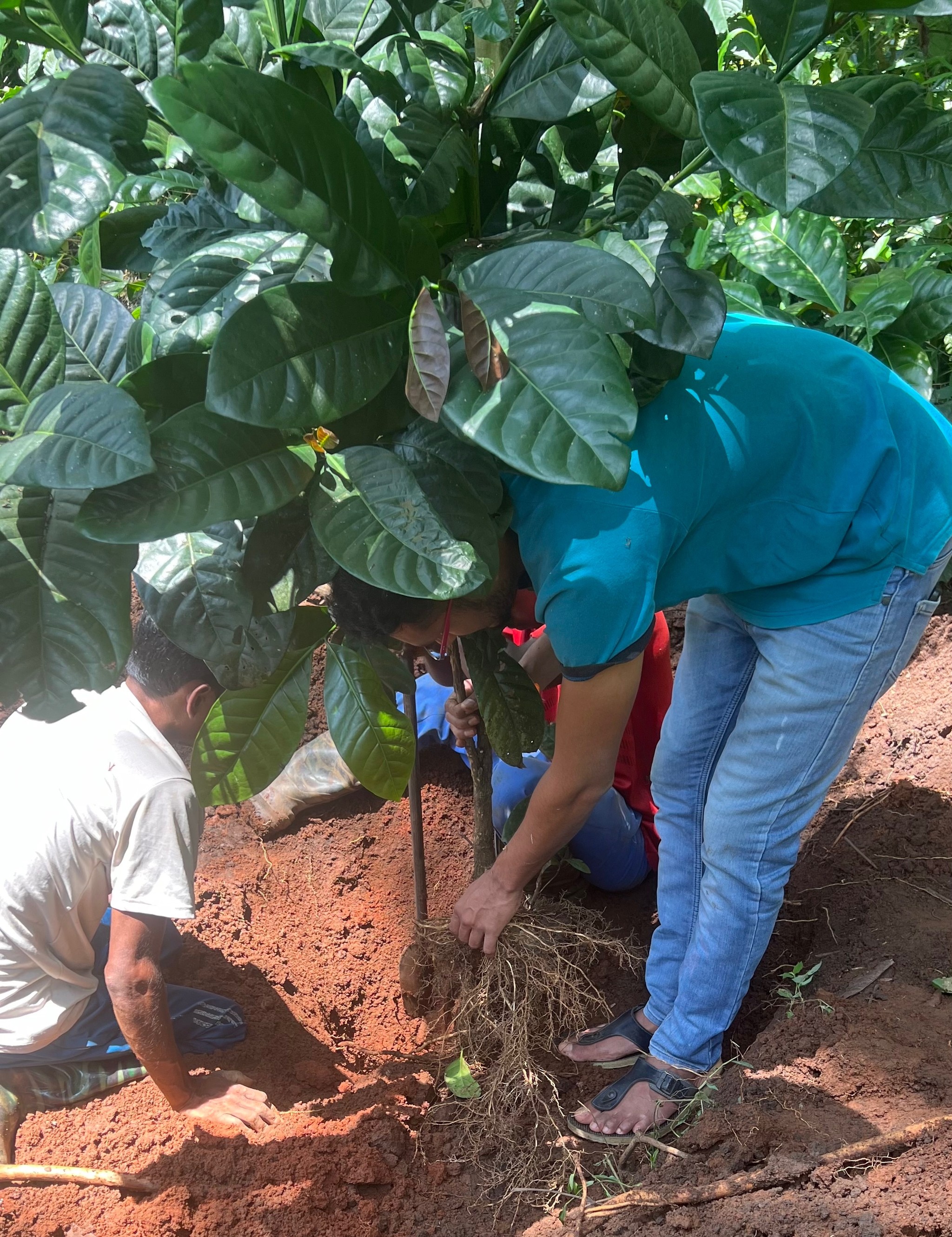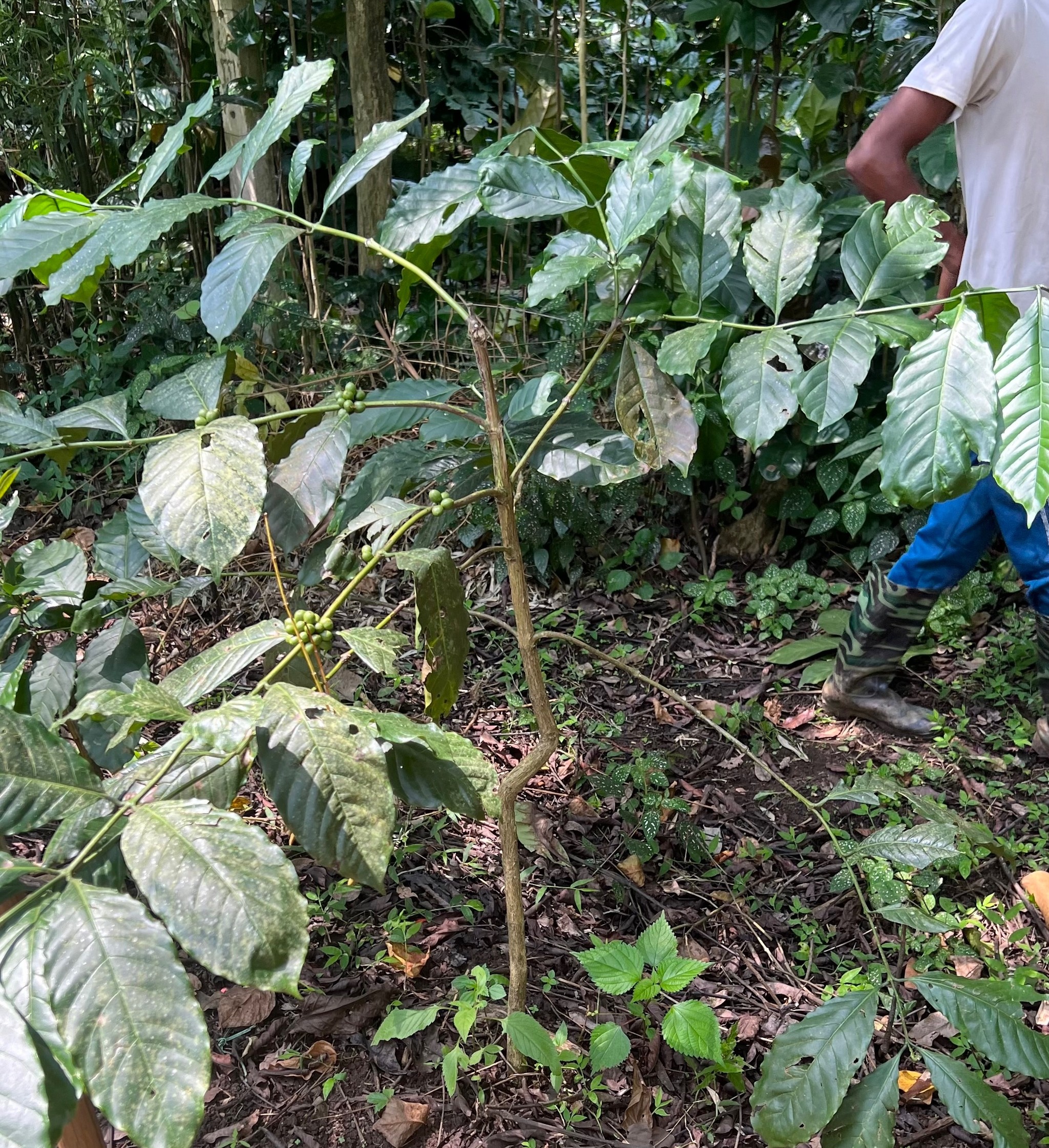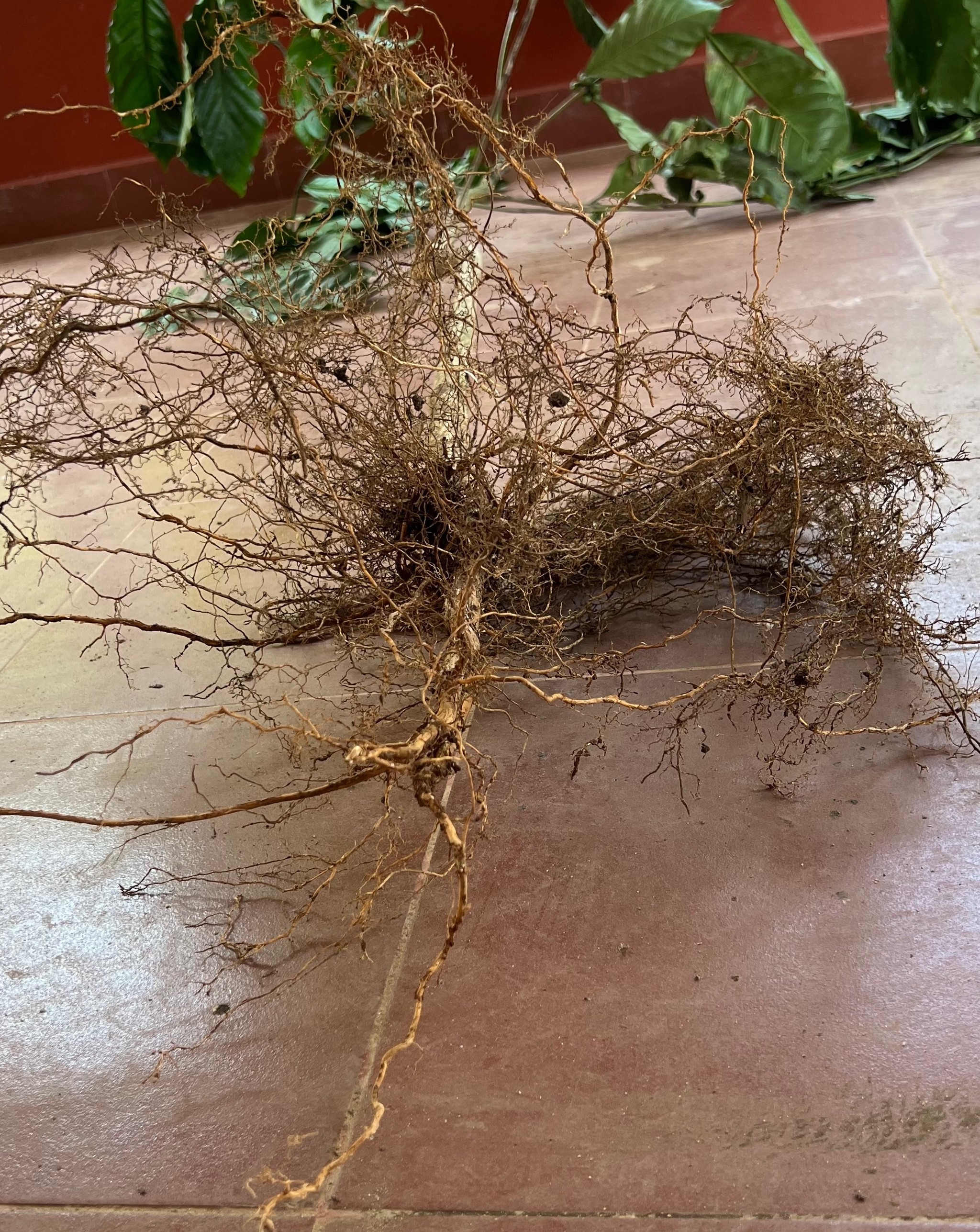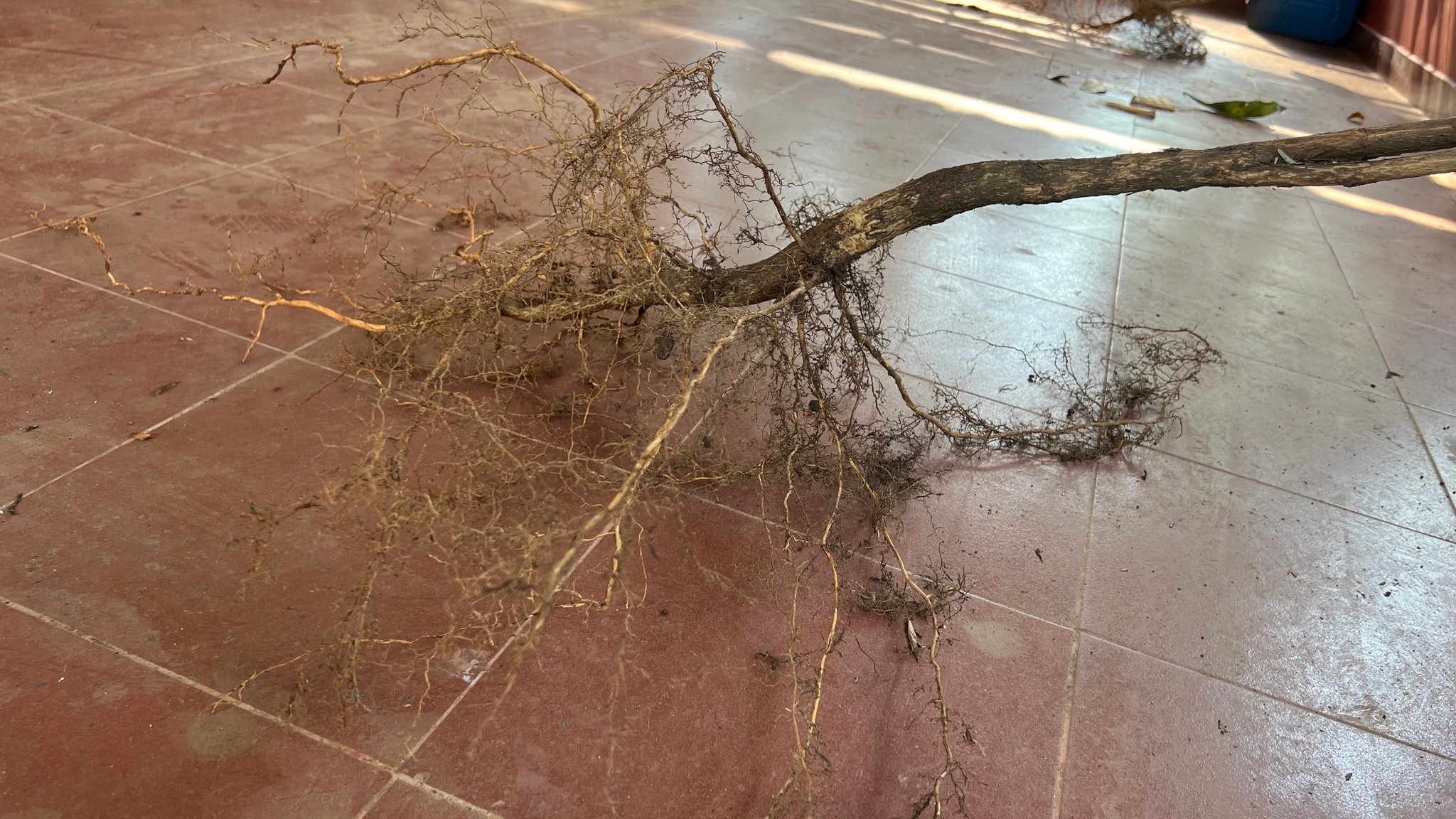A closer look at the Excelsa and Robusta Root System

The coffee tree root system consists of five types of roots: the central tap root, axial roots, lateral roots, feeder bearers, and root hairs. In a recent field project at SICC labs, we compared the root systems of Robusta and Excelsa coffee plants.
A more comprehensive study of the root system would require a larger dataset for comparison, but these two specimens are fairly representative of their species.
We carefully dug out an Excelsa plant and a Robusta plant, keeping the root systems intact. Both plants were planted at the same time, in the same block, and next to each other. Plants with deep tap roots are better able to access water and nutrients from deep in the soil. This is especially important during periods of drought, when surface water is scarce. Deep tap roots also help to anchor plants in the ground, making them more resistant to wind and erosion.

Findings
We found that the tap root of the Excelsa plant was 80 cm deep, while the tap root of the Robusta plant was only 52 cm deep. Here are some of the parameters (in centimetres):
Excelsa: Plant Height: 170, Root Height: 80, Root Spread: 54
Robusta: Plant Height: 105, Root Height: 52, Root Spread: 62
What we haven't measured is the thickness of the feeder roots which is much thicker in the Excelsa. We removed a few more plants and Excelsa seem to have thicker feeder roots when compared to Robustas.

Ongoing Research
More research is needed to fully understand the potential of Excelsa coffee as a climate resilient crop (there is ongoing research conducted by Dr. Aaron Davis from Kew which is worth following if you find this interesting).
Our experiences show that Excelsa has a pest-resistant, deep tap root system, making it more resistant to drought and other stresses. This makes it a promising option for coffee growers looking to adapt to the challenges of climate change, either as rootstock for Arabica or Robusta or as a standalone plant.

